![]() |
words | deeds | thoughts |
The core maxim of Zoroastrianism is the Threefold Path of Asha:
• Humata - Good Thoughts
• Huxta - Good Words
• Huvarshta - Good Deeds
This is the path of aligning oneself back to Asha, the cosmic order.
Wikipedia: Zoroastrianism
#98  |
-560 |
 |
choosing | living | examining |
Socrates, in Plato's Apology, in his own defense at his trial for impiety and corrupting the youth, explained why he chose death over exile as a punishment, for to be exiled from the elenchus (Socratic discourse) in Athens, would keep him from examining his life, thus from loving wisdom. In short,
...the life which is unexamined is not worth living...
Wikipedia: The unexamined life is not worth living
Plato. Apology. #654  |
-399 |
![]() |
vacha (word) | karmana (deed) | manasa (thought) |
In Sanskrit, trikaranaśuddhi refers to the purity, unity, harmony and congruence of
• manasa (thought)
• vacha (word or speech)
• karmana (deed)
The Indian saying Manassekam, Vachassekam, Karmanyekam Mahaatmanam speaks of this congruence in Mahatma (a great person), that they are centered on unity in all three ways, and themselves have this unity.
Wikipedia: Manasa, vacha, karmana
#100  |
100 |
![]() |
Brahma (creator) | Vishnu (preserver) | Shiva (destroyer) |
In synthetic Hinduism, the Trimurti is the trinity of supreme divinity:
• Brahma is the creator
• Vishnu is the preserver
• Shiva is the destroyer
The corresponding phonemes A, U, M together constitute the symbolic word Aum, representing Brahman, the ultimate reality. The three are attested in the verse from the Vishnu Purana (1.2.66)
In this way, the one supreme entity divides itself into three forms — Brahma, Vishnu, and Mahesh [Shiva] — taking on different aspects. It creates, preserves, and destroys the universe in various ages.
Wikipedia: Trimurti #102  |
650 |
![]() |
planning | action | fact-finding |
German Jewish American psychologist Kurt Lewin, the founder of social psychology, coined the term "action research", a comparative research on the conditions and effects of various forms of social action and research leading to social action. Action research uses the Lewinian spiral:
...a spiral of steps, each of which is composed of a circle of planning, action, and fact-finding about the result of the action
Wikipedia: Kurt Lewin
Kurt Lewin. Action Research and Minority Problems. #256  |
1946 |
![]() |
cut up | reassemble | emerge |
American beat poet William S. Burroughs and French poet Brion Gysin, in their book of collaborative fiction, The Third Mind, showcased the cut-up technique which Guisin discovered in 1957 and they popularized in the 1960s. The method consisted of three steps which they applied collaboratively.
1) Physically cutting up a written text into pieces.
2) Reassembling the pieces randomly, creating new combinations.
3) Grasping new meaning that emerges through juxtaposition.
Their theory suggests that when two people work together in harmony, they generate a third consciousness or mind that transcends their individual capabilities.
Perplexity AI. Burroughs & Gysin's Theory of the Third Mind between Two People
Wikipedia: Cut-up technique
Wikipedia: The Third Mind #1219 ❤️Daniel Friedman  |
1958 |
![]() |
judging | willing | thinking |
Hannah Arendt, after analyzing the active life (vita activa) in The Human Condition, turned to the contemplative life (vita contemplativa) in The Life of the Mind. She intended to write three volumes, on Thinking, Willing and Judging, but she completed only the first two before her death from a heart attack. she distinguishes the thinking ego, willing ego and judging ego.
• thinking is the product of Reason, leading beyond knowledge, the inner dialogue, the habit of examining whatever happens or whatever attracts attention, regardless of import, thus dissolving established rules of conduct and habits of thought, and opening up conscience. It takes place in the medium of words and is constrained by non-self-contradiction. It focuses on what is not given by the senses as being more real, truthful, meaningful, aims at contemplation and ends in it.
• willing is the product of Freedom, the spring of action, the power of spontaneously beginning a series of successive things or states, bringing about something new, changing the world.
• judging is the product of Intellect, formulating the truth, considering particulars without appealing to pre-established universals, allowing one to judge for oneself, yet mindful of all others, sensitive to conscience, rooted in common sense, noncoercive, persuasive, communicable, appraising past actions and establishing future objectives.
Hannah Arendt. The Life of the Mind. Volume One. Thinking.
Hannah Arendt. The Life of the Mind. Volume Two. Willing.
Stanford: Hannah Arendt #352  |
1978 |
![]() |
judgment | action | knowledge |
American philosopher John Kekes organized his essay on wisdom in three parts.
In good judgment, a person brings his knowledge to bear on his actions. To understand wisdom, we have to understand its connection with knowledge, action, and judgment.
John Kekes. Wisdom. American Philosophical Quarterly. #769  |
1983 |
![]() |
commit | do | learn |
American self-help author Stephen Covey taught an upward spiral model in developing habits. The spiral consists of three parts: learn, commit, do.
Wikipedia: The 7 Habits of Highly Effective People #109  |
1989 |
![]() |
word | deed | thought |
The confession, at the start of the Divine Service of the Lutheran church, includes the phrase
We have sinned against you in thought, word, and deed, by what we have done and by what we have left undone.
Wikipedia: Confiteor #99  |
2010 |
![]() |
hypothesis | statistical model and calculation | economic sense |
The International Monetary Fund explains the methodology of econometrics as follows.
The first step is to suggest a theory or hypothesis to explain the data being examined. The explanatory variables in the model are specified, and the sign and/or magnitude of the relationship between each explanatory variable and the dependent variable are clearly stated. At this stage of the analysis, applied econometricians rely heavily on economic theory to formulate the hypothesis
The second step is the specification of a statistical model that captures the essence of the theory the economist is testing. The model proposes a specific mathematical relationship between the dependent variable and the explanatory variables—on which, unfortunately, economic theory is usually silent. By far the most common approach is to assume linearity—meaning that any change in an explanatory variable will always produce the same change in the dependent variable (that is, a straight-line relationship).
The third step involves using an appropriate statistical procedure and an econometric software package to estimate the unknown parameters (coefficients) of the model using economic data. This is often the easiest part of the analysis thanks to readily available economic data and excellent econometric software. Still, the famous GIGO (garbage in, garbage out) principle of computing also applies to econometrics.
The fourth step is by far the most important: administering the smell test. Does the estimated model make economic sense—that is, yield meaningful economic predictions?
&ęmsp;If the estimated parameters do not make sense, how should the econometrician change the statistical model to yield sensible estimates?
Sam Ouliaris. What Is Econometrics? #1080 ❤️MP  |
2011 |
 |
documentation requirement | action taken | documentation fulfillment |
Amanda Andrews and Bernie St Aubyn, Senior Lecturers in Nursing at Birmingham City University in the UK, discuss the medical and legal significance of documentation as dictated by the Nursing and Midwifery Council Code of Conduct.
Amanda Andrews, Bernie St Aubyn. If it’s not written down; it didn’t happen... #1023  |
2015 |
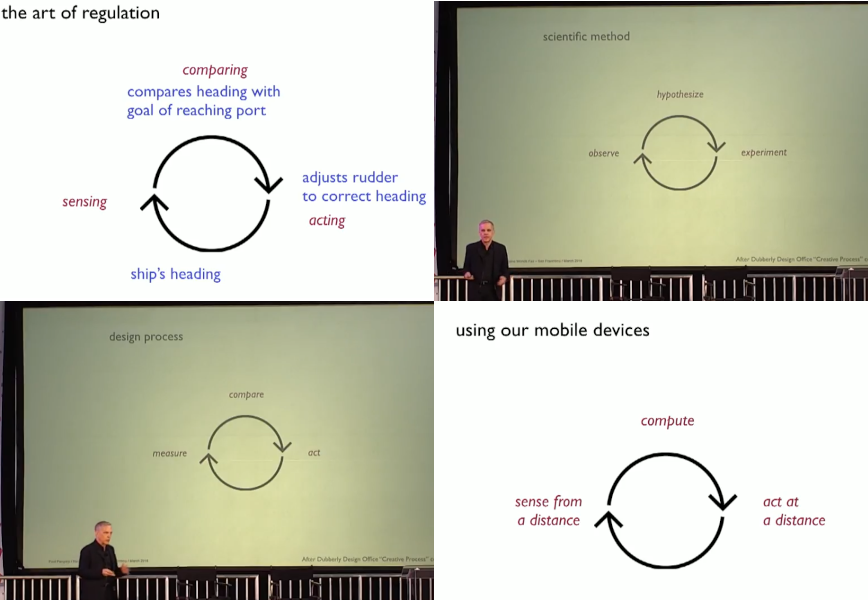 |
comparing | acting | sensing |
American cyberneticist Paul Pangaro describes cybernetics.
Cybernetics is the art of getting what you want. It's the art of steering, of having a goal, aiming toward your goal and using feedback to get back. So it's this circular progress. In the case of a boat, it's seeing where you are compared to getting into the port, and adjusting the rudder to go in the right direction. But it's really everywhere and it's this general idea of sensing the world, comparing what you want to what you have, and then acting to get what you want. And it's this circular loop. So for the first time it's a science, it's a discipline, or maybe even an art which is about achieving goals and getting purpose. And this is where it began. But it's everywhere. Clinical practice in medicine, it's the same loop. In management. The scientific method is this. The design process: you measure something, you compare whether you're getting to what you want and then you act to design better.
Paul Pangaro. The Future of Cybernetics. #952  |
2018 |
 |
feelings | behaviors | thoughts |
Californian Cognitive behaviorial therapists Albert Bonfil and Suraji Wagage describe a basic model of emotional experience in terms of thoughts, feelings, and behaviors:
• Thoughts refer to the ways that we make sense of situations. Thoughts can take a number of forms, including verbal forms such as words, sentences, and explicit ideas, as well as non-verbal forms such as mental images. Thoughts are the running commentary we hear in our minds throughout our lives.
• The term feelings here doesn’t refer to emotion, but the physiological changes that occur as a result of emotion. For instance, when we feel the emotion of anger, we have the feeling of our face flushing. When we feel the emotion of anxiety, we have the feelings of our heart pounding and muscles tensing. Feelings are the hard-wired physical manifestation of emotion.
• Behaviors are simply the things we do. Importantly, behaviors are also the things we don’t do. For instance, we might bow out of a speaking engagement if we feel overwhelming anxiety. On the other hand, if instead we feel confident, we might actually seek out those sorts of engagements.
Albert Bonfil, Suraji Wagage. A Course in CBT Techniques: A Free Online CBT Workbook. Part 3: Applying the CBT Model of Emotions #1007 ❤️William Pahl  |
2021 |
 |
coach | compete | celebrate |
Atlas Network has three departments that execute their Coach, Compete, Celebrate!™ model by which they cultivate a global network of think tank leaders advancing a shared vision of a free, prosperous, and peaceful world where the principles of individual liberty, property rights, limited government, and free markets are secured by the rule of law.
• The Coach Department trains leaders and provides consulting services.
• The Compete Department awards grants on a competitive basis.
• The Celebrate Department runs events that foster camaraderie and collaboration and provide visibility and validation.Steven Green. Coach, Compete, Celebrate!™
Atlas Network. Our Model: It’s time to change the way we view development. #1024  |
2022 |
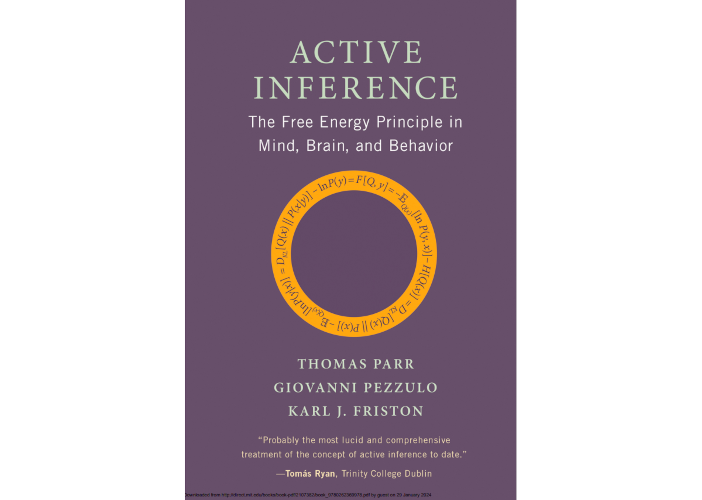 |
mind | behavior | brain |
The title of this active inference textbook refers to three domains: mind, brain and behavior.
Thomas Parr, Giovanni Pezzulo, Karl Friston. Active Inference: The Free Energy Principle in Mind, Brain and Behavior #61  |
2022 |
![]() |
plan | do | perceive |
Active inference recognizes that making sense of our sensations is an active process of self-evidencing, which manifests in all we plan, do and perceive.
To illustrate the simplicity of Active Inference—and what we are trying to explain—place your fingertips gently on your leg. Keep them there motionless for a second or two. Now, does your leg feel rough or smooth? If you had to move your fingers to evince a feeling of roughness or smoothness, you have discovered a fundament of Active Inference. To feel is to palpate. To see is to look. To hear is to listen. This palpation does not necessarily have to be overt—we can act covertly by directing our attention to this or that. In short, we are not simply trying to make sense of our sensations; we have to actively create our sensorium. In what follows, we will see why this has to be the case and why everything that we perceive, do, or plan is in the compass of one existential imperative—self-evidencing.
Thomas Parr, Giovanni Pezzulo, Karl Friston. Active Inference: The Free Energy Principle in Mind, Brain and Behavior, Preface. #65  |
2022 |
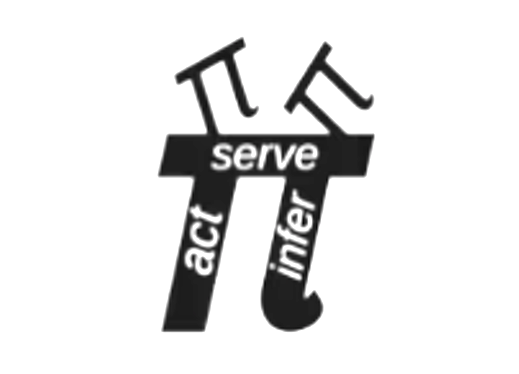 |
serve | act | infer |
The logo of the Active Inference institute includes the motto:
• act
• serve
• infer
Active Inference Institute
#105  |
2022 |
![]() |
be | embody & do | have & vision |
Life coach Nona Djavid extends Stephen Covey's Be, Do, Have model:
• Vision - Write down your vision: Who do you want to be? How will you feel when you achieve your goal? Who will be a part of your journey?
• Be - Be the authentic personality that aligns with the behaviors needed to reach your goal.
• Embody - Embody, with simple acts, the emotions you described in your vision.
• Do - Do the actions that move you towards your goal.
• Have - Have the desired result.
Nona Djavid. Two Missing Pieces of the Be, Do, Have Model #107  |
2023 |
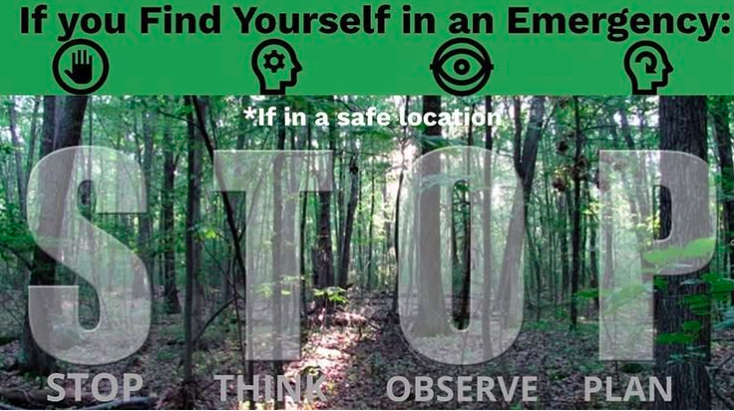 |
plan | do | stop - think - observe |
Hunters are taught the acronym S.T.O.P. for dealing with an emergency so that they don't make a bad situation worse.
S: Stop and sit down. Keep a positive mental attitude.
&ęmsp;T: Think about your surroundings. Could you find your way out, or are you going to spend the night?
O: Observe what is around you. Can you hear vehicles? Can you hear farm animals or farm machinery? Can you see radio towers or logging roads? Use your senses to find out where you are, and always refer to your hunting maps.
P: Plan what you do. The time of day and the weather will influence how the plan will be set in motion and what you will do first.
hunter-ed. S.T.O.P.: stop, think, observe, plan #1011  |
2023 |
![]() |
be | do | think |
The Institute of Relational Being practices collective imagination. They organized a Think Do Be Nature Camp at the Gathering of Tribes.
Our desire is to make this an inclusive and welcome space where we can come together with curiosity and a willingness to live in more relational ways along with our more-than-human and multispecies communities. #78  |
2024 |
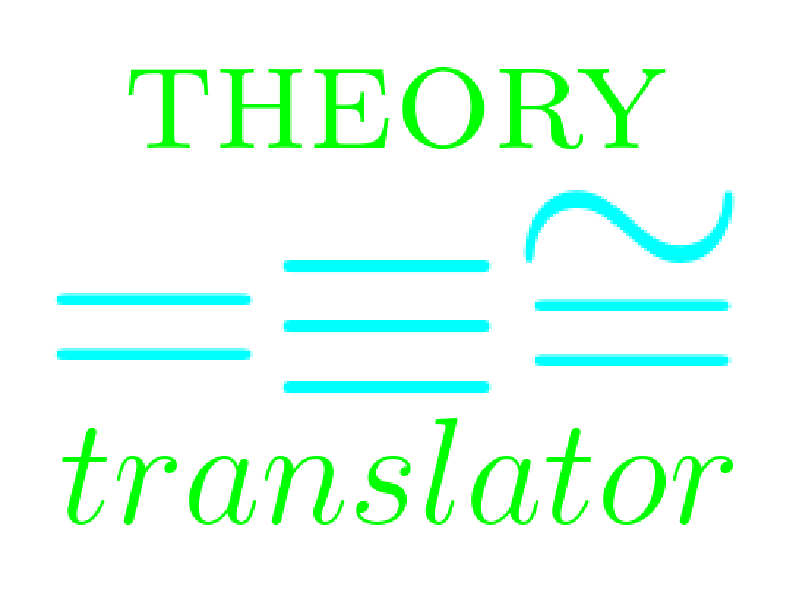
 Add an example!
Add an example!








